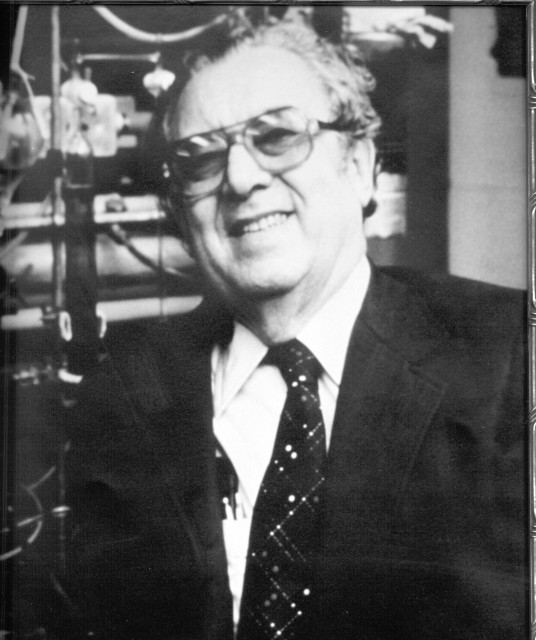Herbert Charles Brown
1912-2004

Brown is perhaps the most prolific organic chemist of the 20th century. He is best known for his work in organoboron chemistry, for which he shared (with G. Wittig) the 1979 Nobel Prize in Chemistry. He discovered the hydroboration reaction (addition of diborane to alkenes) and developed the multi-faceted and synthetically useful chemistry of the resulting organoboranes. In this photo, Professor Brown holds a model of 9-borabicyclo[3.3.1]nonane (9-BBN), prepared by adding borane to 1,5-cyclooctadiene and itself a stable, useful hydroborating reagent. This work is summarized in Brown's book "Organic Synthesis via Boranes" (1975). Brown contributed to many other areas of organic chemistry, among which were selective reducing agents, steric effects (in displacement, elimination and acid-base reactions), and directive effects in electrophilic aromatic substitution (the σ+ constant). He challenged provocatively, but ultimately unsuccessfully, the concept of non-classical carbocations. Brown won many awards in addition to the Nobel, among them the National Medal of Science (1970) and the Priestley Medal (1981).
Sponsor: Michael W. Rathke
Location in chemistry building:
Fifth Floor; West Wing North Wall; Sequence 1
Source:
Professor Brown